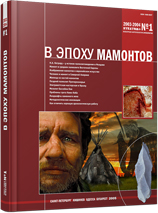Природная среда обитания древнего человека на юго-западе Восточной Европы в позднем палеолите (по данным палинологии стоянки Большая Аккаржа и опорных разрезов)
Natural Habitat of the Early Man in South-West of the Eastern Europe in Late Palaeolithic (based on palynological data and sections from the station Bolshaya Akkarzha)
Author(s): S. I. Medyanik, Igor V. SapozhnikovSubject(s): History, Archaeology, Geography, Regional studies, Historical Geography, Environmental Geography
Published by: Издательский дом Stratum, Университет «Высшая антропологическая школа»
Summary/Abstract: The Upper Paleolithic site Bolshaya Akkarzha is situated in the western steppe zone of Eastern Europe (Northern Black Sea coastal area, Ukraine). Archaeological, lithological, palynological and palaeontological studies were carried out there. Palynological studies were realized in 40 samples from two lithologically identical sections made at a distance of 10 m from each other. The vegetation and climate during the Wurmian glaciation maximum (18.0-19.0 ka BP) corresponding to cultural Paleolithic layer were reconstructed. Xerophylous and periglacial steppes were widespread in condition of dry and cold climate. A better climate caused an increase in birch-pine forest areas and appearance of some broad-leaved trees – Quercus, Carpinus, Corylus, etc. The palynological conclusions about predominance of open steppe landscape during the maximum of Wurmian glaciation were confirmed by palaeontological data on bison bone findings.
Journal: Stratum plus. Археология и культурная антропология
- Issue Year: 2004
- Issue No: 1
- Page Range: 454-466
- Page Count: 13
- Language: Russian
- Content File-PDF

